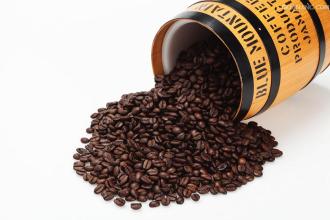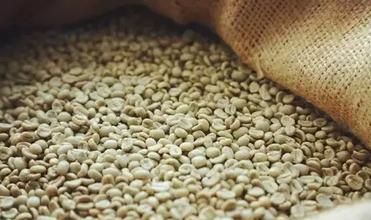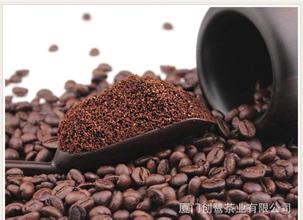Introduction to the varieties of Minas Coffee beans in Brazil
Introduction to the varieties of Minas Coffee beans in Brazil
Fazenda Rainha (Queen Farm) is located in the Alta Mogiana area of S ã o Paulo, north of the city of Sao Paulo. This manor is well-known in Brazil and is owned by the Carvalho Dias family. Since the first Brazilian COE competition in 1999, Carvalho Dias has won awards every year, winning more than 12 times in the past seven years, and even arranged for the champion, 9th, 11th, and so on in 2004. Many manors of various sizes in Brazil have been hoping to be shortlisted for many years, but it is difficult to get them. And Queen's Manor (Fazenda Rainha) enjoys a brilliant record: 2000 runner-up, 2001 second runner-up, 2005 29th place, so far, Queen's Manor has won three awards. Yellow bourbon beans are sweet, dry and sunbathing (or half-sun) to make them slightly sour, but combine well with sweetness and have tropical fruit aromas. The Carvalho Dias family is the founding member of the Brazilian Fine Coffee Association. The persistence of coffee quality and the maintenance of the environment are obvious to all. In the family farm, the use of natural waterfalls to develop pollution-free hydropower, self-sufficient electricity demand (another award-winning member of the family is named Waterfall Manor after this waterfall) Construction of churches, classrooms, nurseries, medical stations, maintenance of primitive forests of native animals and plants, and continuous afforestation.
In the case of the Queen's Manor, the environmental protection is quite thorough. Because of the high terrain and non-plain terrain, it is impossible to harvest by machine and harvest the fruit completely by hand. And plant low-yield and high-quality bourbon species, as the essence of high-quality Brazilian coffee on behalf of the manor! This batch of Queen's Manor (Fazenda Rainha) belongs to the Carvalho Dias family and has been around for more than 116 years.
At present, there are 2 million hectares of land in Brazil for growing coffee, and the largest is Arabica. These beans will eventually be sent to large bakers in various countries, that is, the well-known Santos (named after the port of export santos, not the producing area). Because of the coffee competition after 2000, the quality of coffee beans produced in the high-altitude areas of the south was appreciated, mainly by the farms around the Minas platform. Coffee quality is also the largest among Brazilian beans, such as Syracuse in the west of Minas and Matas in the east, Bashiya in the north or small farms in the south. Minas has almost become synonymous with Brazilian boutique coffee. In recent years, the coffee competition is accurate to be separated by treatment (water treatment / half-washing / half-sun / sun-drying), which has developed a variety of flavors, taste and finish, which is quite different from traditional Brazilian coffee. In particular, the half-sun method and the sun method perform best, the aroma of clean and low-acid fruit increases, so that the strong chocolate flavor reduces the farm coffee without machine harvest, and the fully ripe coffee beans are picked by hand, with aromas of citrus and fruit tea. the wet aroma has the delicate aroma of black tea, showing the elegant aroma of jasmine and herbal tea, and the finish is full of oolong tea.

Important Notice :
前街咖啡 FrontStreet Coffee has moved to new addredd:
FrontStreet Coffee Address: 315,Donghua East Road,GuangZhou
Tel:020 38364473
- Prev

Introduction to the method of regional treatment of flavor varieties in the description of the taste of Yejiaxuefei coffee
Yega Xuefei Coffee characteristic Taste description Flavor Variety Regional treatment method the grading system of Ethiopian coffee is not distinguished by the number of eyes, but according to the proportion of defective beans in raw beans. In October 2009, Ethiopia launched the ECX boutique coffee trading classification system. Q-Grader rated raw beans as follows: washed Yega Xuefei was divided into Grad
- Next

Introduction of Burundian Coffee Bean Grinding scale Regional treatment Variety Manor
Burundian coffee beans grinding scale production area processing method variety manor introduction Burundian coffee has a striking resemblance to its neighbor Rwanda, and the coffee produced in these two countries is often confused. Burundian coffee is mainly grown in bourbon, with traditional wet processing of coffee cherries. Its boutique coffee is characterized by elegant sweetness and bright citrus aromas. This batch
Related
- Detailed explanation of Jadeite planting Land in Panamanian Jadeite Manor introduction to the grading system of Jadeite competitive bidding, Red bid, Green bid and Rose Summer
- Story of Coffee planting in Brenka region of Costa Rica Stonehenge Manor anaerobic heavy honey treatment of flavor mouth
- What's on the barrel of Blue Mountain Coffee beans?
- Can American coffee also pull flowers? How to use hot American style to pull out a good-looking pattern?
- Can you make a cold extract with coffee beans? What is the right proportion for cold-extracted coffee formula?
- Indonesian PWN Gold Mandrine Coffee Origin Features Flavor How to Chong? Mandolin coffee is American.
- A brief introduction to the flavor characteristics of Brazilian yellow bourbon coffee beans
- What is the effect of different water quality on the flavor of cold-extracted coffee? What kind of water is best for brewing coffee?
- Why do you think of Rose Summer whenever you mention Panamanian coffee?
- Introduction to the characteristics of authentic blue mountain coffee bean producing areas? What is the CIB Coffee Authority in Jamaica?

